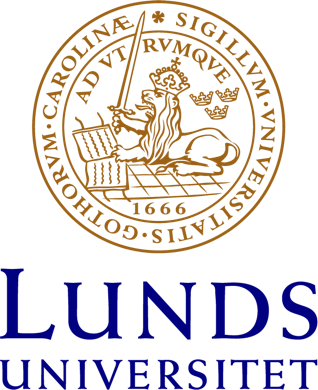I here propose to reflect upon the question of iconicity between the experience and language of distance in the Paamese
Lifeworld[1]. In this presentation, I suggest to adopt Croft’s (2003: 102) broad definition of iconicity: “[t]he intuition behind iconicity is that the structure of language reflects in some way the structure of experience”.
Paamese is an Austronesian language of the Eastern Oceanic subgroup, spoken by the people of Paama, one of the eighty-two islands of Vanuatu in the South Pacific. Crowley (1996) explains that there are two types of nouns in Paamese, those who are indirectly suffixed (1) and those who are directly suffixed (2) when possessed.
(1) vakili ona-k canoe POSS-1SG ‘my canoe’ | (2) vatu-k head-1SG ‘my head’ |
From there one could either consider that Paamese nouns are arbitrarily grouped together into these two categories, or that their two distinct morphosyntactic markings reflect, in some way, the structure of experience.
In Paamese, direct morphosyntactic marking is to be found in the domains of body parts (2), aspects of individuality (3), or kinship relations (4). This paper will mainly focus on the latter. Some kin terms are always directly suffixed (4), some always indirectly suffixed (5), and others have both forms (6-7).
(3) iso-k name-1SG ‘my name’ | (4) natu-k-ahin child-1SG-female ‘my daughter’ |
(5) ahineli ona-k female POSS-1SG ‘my daughter-in-law’ | (6) āso-k spouse-1SG ‘my spouse’ |
(7) ahin ona-k female POSS-1SG ‘my wife’ | |
I will suggest that the morphosyntactic marking of Paamese kin terms reflects, in some way, the experience of both actual distance (topological localization of Paamese clans) and non-actual distance (conventionalized social and emotional distance).
To support this argument I will refer to the notion of image schemas as recurring patterns of our sensorimotor experience (Johnson 2005) to propose that the NEAR-FAR / PART-WHOLE / CENTER-PERIPHERY complex schem
[2] is embodied, based on a compelling experimental psychological study (de Vignemont
et al. 2009). I will argue that this complex schema is not only recruited to structure a representation of the body, but also mapped onto intangible aspects of the Paamese Self, like kinship relations.
Moreover, “it is experience that proposes, but convention that disposes” (Blomberg and Zlatev 2014: 412), and there are indeed a number of well-identified conventions of actual and non-actual distance to be found in the Paamese lifeworld. I will argue that the experience of distance in Paamese kinship relations is conventionalized in topological settings (the clan’s territory), social rules (e.g. strict rules of avoidance, and strict rules of address), and also emotional display (e.g. free among blood relatives, whereas emotional distance is to be observed between siblings-in-law).
I propose the following hypothesis according to which the original experience of distance in Paamese kinship relations has become
sedimented (Husserl 1970b), in the morphosyntactic marking of kin terms. I would here again follow Blomberg and Zlatev (2014) and will assume that “from a Husserlian perspective the establishment of linguistic conventions and norms does not completely sever the connection to the motivating experiences. Metaphorically speaking the original experience can be “reanimated” and once again given a breath of life.” In Paamese daily life, the original experience of distance between family members is indeed constantly being “reanimated” by a number of strict social rules.
While a number of points proposed in this paper would remain to be further empirically tested, it will hopefully bring a few drops of water to the mill by suggesting that the argument of
iconicity is not necessarily to be opposed to the
frequency of use argument (as it has been done in the recent past
[3]), and that both arguments can in fact be harmoniously combined to explain specific grammatical asymmetries (directly vs. indirectly possessed nouns).
References
Blomberg, J. and Zlatev, J. (2014).
Actual and non-actual motion: why experientialist semantics needs phenomenology (and vice versa). Phenomenology and Cognitive Sciences.
Croft, W. (2003).
On Iconicity of Distance. Cognitive Linguistics. Volume 19, Issue 1, Pages 49–57.
Croft, W. (2003).
Typology and Universals. 2nd ed. Cambridge: Cambridge University Press.
Crowley, T. (1996). “Inalienable possession in Paamese grammar”. In
The Grammar of Inalienability: A Typological Perspective on the Part–Whole Relation edited by Hilary Chappell, and William McGregor, 383-432. Berlin: Mouton de Gruyter.
de Vignemont, F., Majid, A., Jolla, C., Haggard, P. (2009).
Segmenting the Body into Parts: Evidence from Biases in Tactile Perception. Quaterly Journal of Experimental Psychology, 62(3), 500-512.
Haiman, J. (1983).
Iconic and economic motivation. Language 59, 781–819.
Haiman, J. (2008).
In Defence of Iconicity. Cognitive Linguistics. Volume 19, Issue 1, Pages 35–48.
Haspelmath, M. (2008).
Frequency vs. iconicity in explaining grammatical asymmetries. Cognitive Linguistics. Volume 19, Issue 1, Pages 1–33.
Johnson, Mark.( 2005) “The philosophical significance of image schemas”. In
From Perception to Meaning: Image Schemas in Cognitive Linguistics. Ed. Beate Hampe. Berlin: Mouton de Gruyter. 15-34.
Thompson, E. (2007).
Mind in Life: Biology, Phenomenology and the Sciences of the Mind. London: Belknap Press.
[1]In the Husserlian sense defined by Thompson as follows: ”the life-world as ground [is] the pre-given soil out of which everything is generated and nourished. This soil includes one’s forebears and culture. We human beings constitute and reconstitute ourselves through cultural traditions, which we experience as our own development in a historical time that spans the generations”
[2]A eurocentric illustration of this complex schema at work in kinship relations can be found in expressions such as ”I am very close to my father”, ”my sister is an important part of me”, ”my grandparents are at the core of our family´s unity”.
[3] See for instance Haspelmath’s (2008) criticism of Haiman (1983) and Croft (2003), then Croft’s reply (2008) and Haiman’s reply (2008) to Haspelmath.
